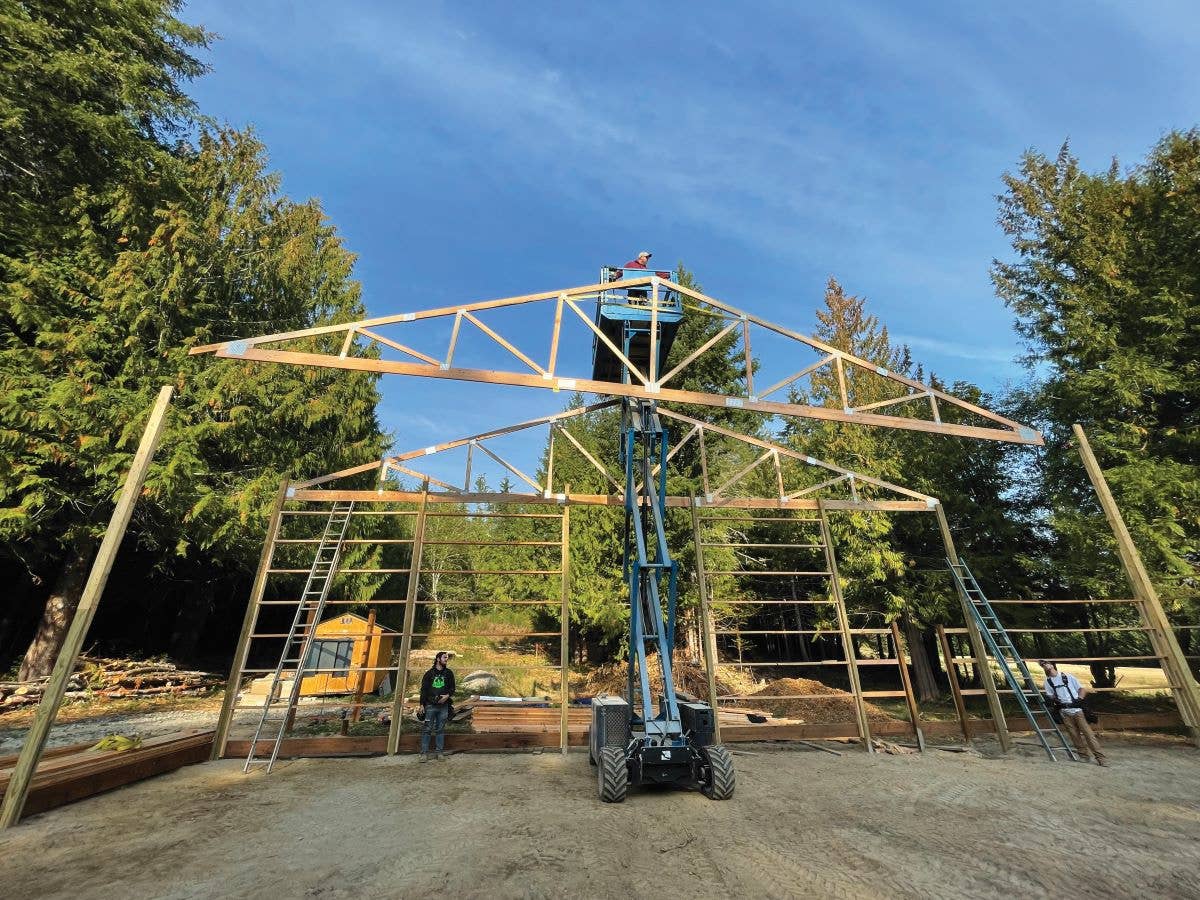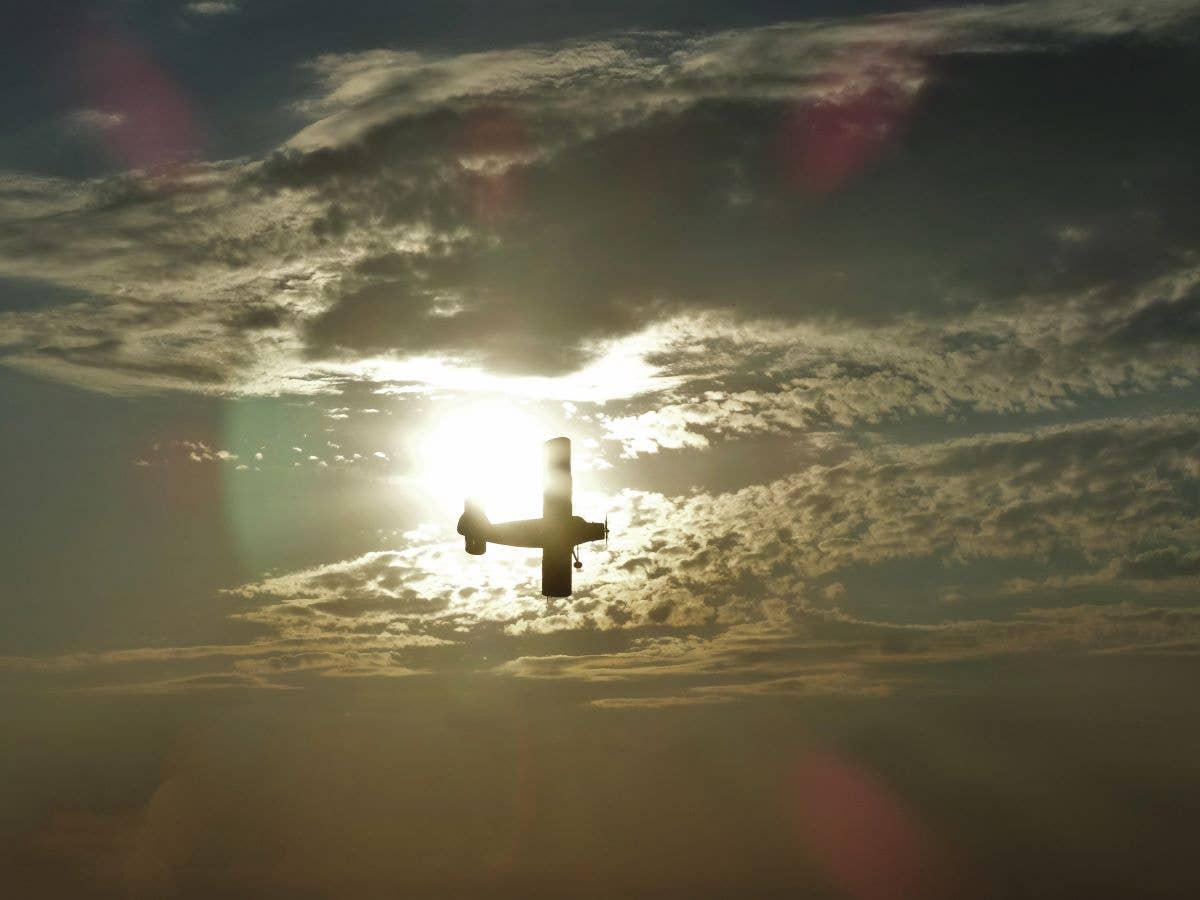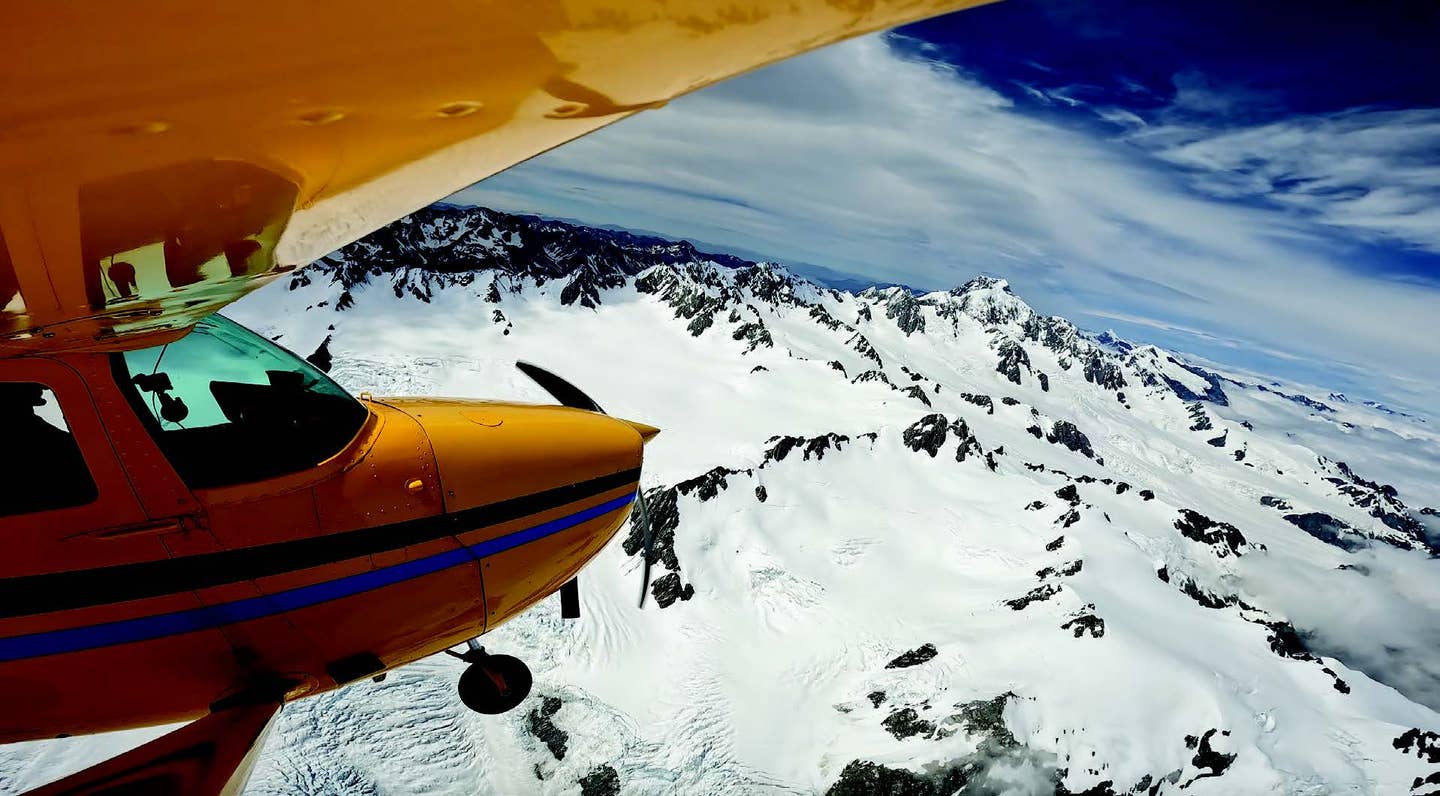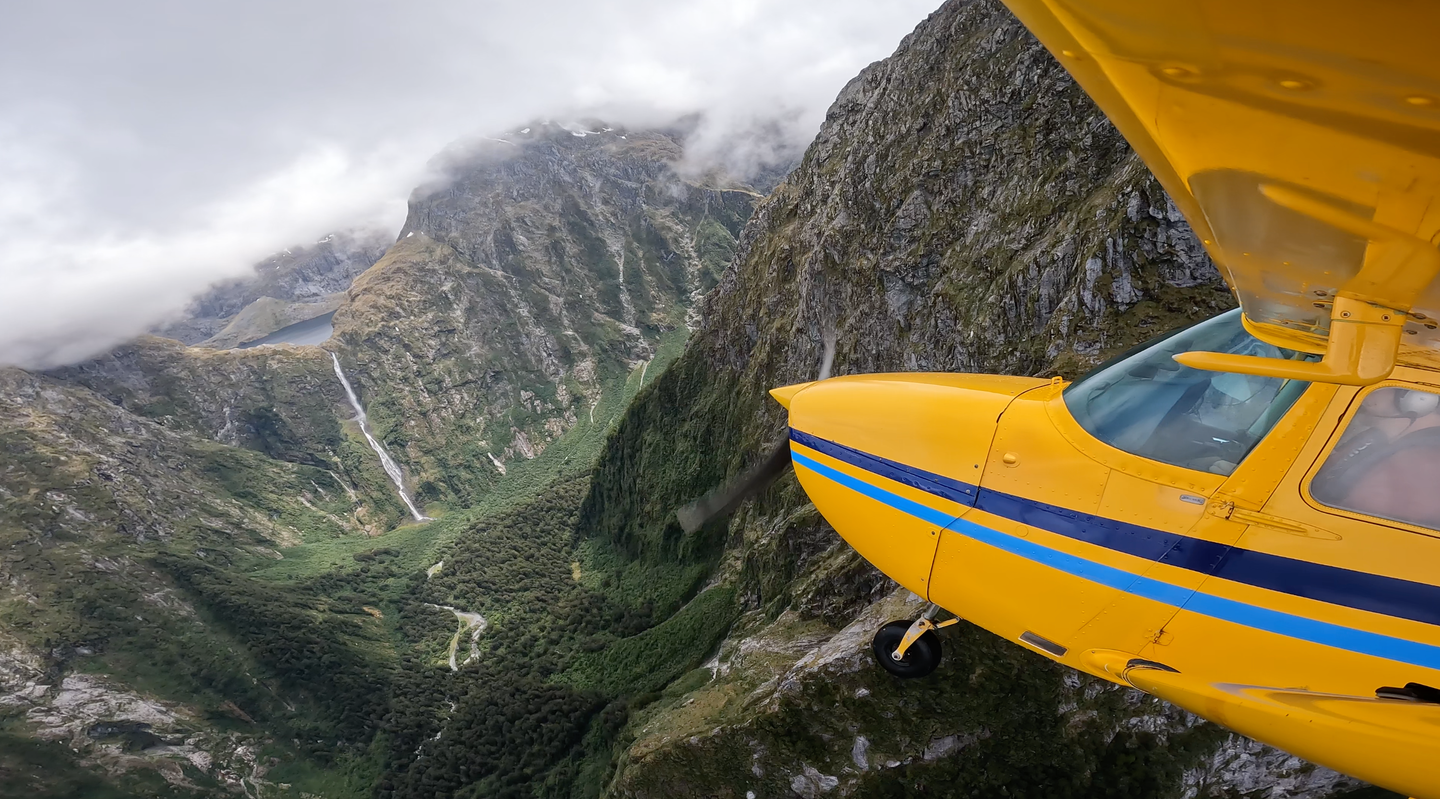Delays, Mistakes All Part of Building a Dream Hangar
An aviation homestead becomes a sort of finishing school for a commercial pilot, acquiring some of the more practical skills missed out on whilst building a flying career.

Building the dream hangar starts with a frame. [Credit: Sam Weigel]
The January sun is low in the sky as we bank over Puget Sound, casting long shadows and bathing the icebound Cascades in warm, golden light. As I roll out on a southerly heading, downtown Seattle appears ahead, framed by bustling Lake Union and the distant floating colossus of Mount Rainier. “My goodness, that’s beautiful,” murmurs my father from the right seat. My mother silently snaps photos of the dramatically-lit cityscape from the Stinson’s spacious backseat. I turn to skirt downtown, eyeing the sun’s inexorable progress toward the southwestern horizon.
“Sorry guys, time to get back,” I announce as I bank towards the Kitsap Peninsula. Hooky is over—time to get back to work. Our scenic tour was a pleasant and well-earned break.
If you're not already a subscriber, what are you waiting for? Subscribe today to get the issue as soon as it is released in either Print or Digital formats.
Subscribe NowDad and Mom (Dave and Sue Weigel) are here from Minnesota to help work on our rather delayed hangar/apartment project while my wife Dawn is away on a humanitarian trip to Thailand. I last wrote about the development of our grass-strip aviation homestead six months ago, just before breaking ground. At the time I said, “We should have a good watertight shell by mid-September, and then we plan to finish out the living quarters in October and November. I sincerely hope we are all moved in by Christmas, perhaps even Thanksgiving." Now I shake my head in bemusement: “Oh, you sweet summer child!” At this point, I shall be ecstatic to move in before July.
I hired local contractors to build the pole barn, pour the slab, and dig the septic system, but I am coordinating the whole thing and finishing out the living quarters myself. This is, admittedly, a poor use of my time from a financial standpoint. It would be much more efficient to pick up overtime flying and leave construction to the pros. But my years of sailing and maintaining Windbird in remote tropical locales gave me a sort of ornery DIY ethos that says, “Yeah, I don’t know what I’m doing, and I know I’ll make mistakes—and I don’t care, because I’ll learn from them.” I regard my active role in the creation of our homestead as a sort of finishing school to acquire some of the more practical skills I missed out on whilst building my flying career. Delays and mistakes are just the price of admission.
The first of these occurred before we even broke ground. Working with an electrician and the power company, I trenched in power and water alongside our driveway, which turned out to be a bit too close to the hangar’s left rear to set the corner pole. Some mistakes by the electrician meant it was late August before the trench passed inspection and was backfilled. With the pole barn delayed, the contractor moved on to another job, and we went on the back-burner. In early September, they set the poles, but it was another few weeks before the concrete was delivered and the footings inspected. Framing didn’t start until October 5.
We had a fantastically warm and dry autumn, and I hoped we could still get the pole barn dried in before the rains came. The framing started quickly at first. My brother Steve flew out, and we assisted the contractors as they nailed on girts, framed doors and windows, and set trusses the second week of October. The purlins, however, took a ridiculous two weeks as several people on the contractor’s small crew quit and others took sick days. I stewed while the framework sat abandoned in perfect construction weather. On days when the contractor’s most reliable employee, JD, showed up alone, I donned my carpenter’s belt and hopped in the lift with him. Othertimes Dawn became an unpaid member of the crew—the first time they could recall an owner’s wife swinging a hammer. At least the septic people showed up and quickly finished the septic tank and drainfield installation.
In mid-October, Dawn and I installed 2-inch foam board around the perimeter, had fill delivered, rented a skid-steer and plate compactor, and brought the floor level up to grade. I excavated trenches for power, water, and plumbing, and we installed power service conduit from the remote meter base into the hangar. I hired a plumber and helped him rough in the plumbing groundwork. Finally, on November 1, soon after the rains finally started, the contractor installed the roof’s steel. Dawn and I spent one frantic week clearing out mud, bringing in more dry fill, compacting it, installing vapor barrier and foam board, and tying in rebar 24 inches on center. That weekend, we installed 3,000 feet of PEX tubing for in-floor heating. Our hard work paid off. On November 18, we had cold but dry weather, and the concrete contractor poured the slab.
Steve flew back out, along with our retired contractor father, in early December. We framed in the living quarters and installed T1-11 siding on the exterior walls, and this went amazingly quickly. Dad and Steve brought Minnesota weather with them as 10 inches of picturesque snow buried the airstrip (and prevented Stinson joyrides), but the lack of rain made for good working weather. I flew the rest of December and early January—and Dawn and I visited Minnesota for Christmas and sailed in the Caribbean over New Year’s—but we found time to wire the hangar and annex, and the plumber finished his rough-in.
Now, in late January, Dad has returned, and this time he brought Mom with him. Despite Dad’s years in construction, it is Mom’s first time working on a job site. She proves immensely useful, and I enjoy working with both of my parents. We finish various framing and electrical odds and ends, trim the exterior in rough-sawn cedar, and install the ductless mini-split heating system. We pass the electrical inspection during their visit and the framing inspection soon after. Meanwhile, the contractors installed the fascia and roof trim and fabricated the gutters and downspouts. Suddenly the hangar is looking a lot like a finished building, at least on the outside.
During my parents’ visit, we take delivery of the long-awaited Higher Power hydraulic hangar door, which will be 44 feet by 15 feet when assembled, but is currently a 5,200-pound bundled Erector set. That’ll be a major project for early March. I’m hiring pros to do the insulation and drywall, and Dawn and I will pick up the living quarters project in April with paint and flooring. We might finish up in May. I’m not losing sleep over the delays. We’re taking each step as it comes, learning a ton, and enjoying the time spent at the airstrip. And giving the Stinson some winter exercise whenever the weather allows.
Such as this clear and cold Sunday, the finest of the winter. The sun has dipped behind the gorgeously backlit Olympic Mountains as we approach the airstrip, plunging the thick forest into gloom. I key the mic seven times and the undulating turf runway is outlined in twinkling white lights. I ease the throttle back and spiral down toward the crease in the forest that denotes the threshold, slip over the final bushes, and flare to a soft landing on the grass. Presently, I turn onto a side taxiway, and a neat wooden hangar appears out of a small clearing. It’s just like I imagined it less than a year ago, and now it’s reality. There’s a lot of work left to accomplish in our labor of love, but this already feels like coming home.
This article was originally published in the April 2023, Issue 936 of FLYING.

Subscribe to Our Newsletter
Get the latest FLYING stories delivered directly to your inbox







